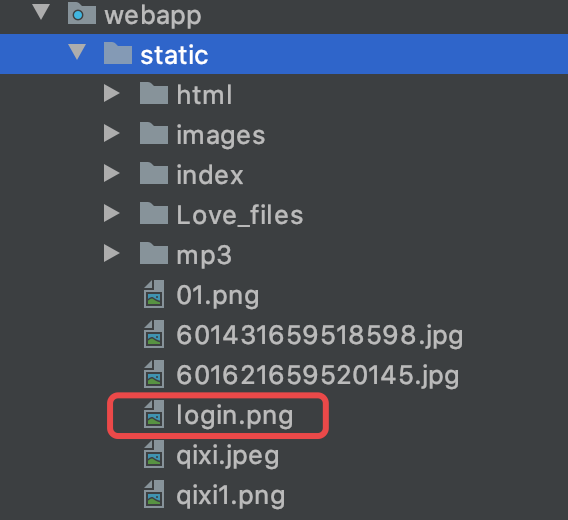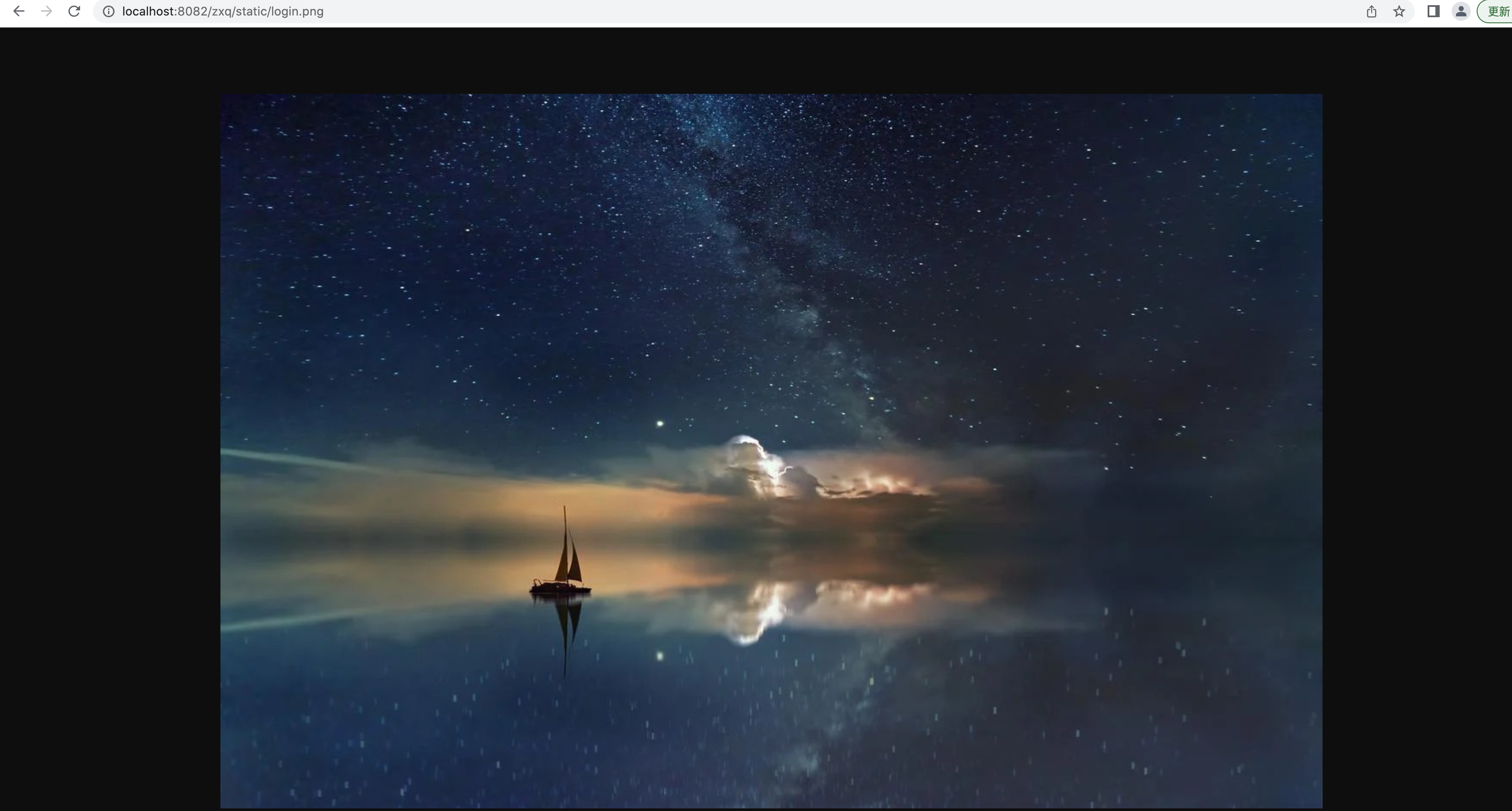springmvc靜態資源設定
<servlet>
<servlet-name>dispatcher</servlet-name>
<servlet-class>org.springframework.web.servlet.DispatcherServlet</servlet-class>
<async-supported>false</async-supported>
</servlet>
<servlet-mapping>
<servlet-name>dispatcher</servlet-name>
<url-pattern>/</url-pattern>
</servlet-mapping>在javaweb專案中設定了DispatcherServlet的情況下,如果不進行額外設定的話,幾乎所有的請求都會走這個servlet來處理,預設靜態資源按路徑是存取不到的會報404錯誤,下面講一講如何設定才能存取到靜態資源,本文將介紹三種方法
1. 在java組態檔中設定DefaultServletHttpRequestHandler來進行處理
@Configuration
@EnableWebMvc
public class MyMvcConfigurer implements WebMvcConfigurer {
@Override
public void configureDefaultServletHandling(DefaultServletHandlerConfigurer configurer) {
// tomcat預設處理靜態資源的servlet名稱為default,不指定也可以DefaultServletHttpRequestHandler.setServletContext會自動獲取
// configurer.enable("default");
configurer.enable();
}
}上述設定完成後org.springframework.web.servlet.config.annotation.WebMvcConfigurationSupport#defaultServletHandlerMapping 方法會生成一個類名為SimpleUrlHandlerMapping的bean,當其他handlerMapping無法處理請求時會接著呼叫SimpleUrlHandlerMapping物件進行處理
org.springframework.web.servlet.config.annotation.WebMvcConfigurationSupport#defaultServletHandlerMapping
/**
* Return a handler mapping ordered at Integer.MAX_VALUE with a mapped
* default servlet handler. To configure "default" Servlet handling,
* override {@link #configureDefaultServletHandling}.
*/
@Bean
public HandlerMapping defaultServletHandlerMapping() {
Assert.state(this.servletContext != null, "No ServletContext set");
DefaultServletHandlerConfigurer configurer = new DefaultServletHandlerConfigurer(this.servletContext);
configureDefaultServletHandling(configurer);
HandlerMapping handlerMapping = configurer.buildHandlerMapping();
return (handlerMapping != null ? handlerMapping : new EmptyHandlerMapping());
}
org.springframework.web.servlet.config.annotation.DefaultServletHandlerConfigurer#buildHandlerMapping
@Nullable
protected SimpleUrlHandlerMapping buildHandlerMapping() {
if (this.handler == null) {
return null;
}
SimpleUrlHandlerMapping handlerMapping = new SimpleUrlHandlerMapping();
handlerMapping.setUrlMap(Collections.singletonMap("/**", this.handler));
handlerMapping.setOrder(Integer.MAX_VALUE);
return handlerMapping;
}SimpleUrlHandlerMapping中有一個urlMap屬性,key為請求路徑匹配模式串,'/**'能匹配所有的路徑, value為handler匹配完成後會呼叫handler處理請求
下面這個方法主要用來匹配獲取handler
org.springframework.web.servlet.handler.AbstractUrlHandlerMapping#getHandlerInternal
@Override
@Nullable
protected Object getHandlerInternal(HttpServletRequest request) throws Exception {
// 請求靜態資源 path=/zxq/static/login.png
// 處理完lookupPath=/static/login.png
String lookupPath = getUrlPathHelper().getLookupPathForRequest(request);
Object handler = lookupHandler(lookupPath, request);
if (handler == null) {
// We need to care for the default handler directly, since we need to
// expose the PATH_WITHIN_HANDLER_MAPPING_ATTRIBUTE for it as well.
Object rawHandler = null;
if ("/".equals(lookupPath)) {
rawHandler = getRootHandler();
}
if (rawHandler == null) {
rawHandler = getDefaultHandler();
}
if (rawHandler != null) {
// Bean name or resolved handler?
if (rawHandler instanceof String) {
String handlerName = (String) rawHandler;
rawHandler = obtainApplicationContext().getBean(handlerName);
}
validateHandler(rawHandler, request);
handler = buildPathExposingHandler(rawHandler, lookupPath, lookupPath, null);
}
}
if (handler != null && logger.isDebugEnabled()) {
logger.debug("Mapping [" + lookupPath + "] to " + handler);
}
else if (handler == null && logger.isTraceEnabled()) {
logger.trace("No handler mapping found for [" + lookupPath + "]");
}
return handler;
}org.springframework.web.servlet.handler.AbstractUrlHandlerMapping#lookupHandler
/**
* Look up a handler instance for the given URL path.
* <p>Supports direct matches, e.g. a registered "/test" matches "/test",
* and various Ant-style pattern matches, e.g. a registered "/t*" matches
* both "/test" and "/team". For details, see the AntPathMatcher class.
* <p>Looks for the most exact pattern, where most exact is defined as
* the longest path pattern.
* @param urlPath the URL the bean is mapped to
* @param request current HTTP request (to expose the path within the mapping to)
* @return the associated handler instance, or {@code null} if not found
* @see #exposePathWithinMapping
* @see org.springframework.util.AntPathMatcher
*/
@Nullable
protected Object lookupHandler(String urlPath, HttpServletRequest request) throws Exception {
// Direct match?
// 精確匹配,是否有符合的handler
// urlPath = /static/login.png
Object handler = this.handlerMap.get(urlPath);
if (handler != null) {
// Bean name or resolved handler?
if (handler instanceof String) {
String handlerName = (String) handler;
handler = obtainApplicationContext().getBean(handlerName);
}
validateHandler(handler, request);
return buildPathExposingHandler(handler, urlPath, urlPath, null);
}
// Pattern match?
// 路徑匹配
List<String> matchingPatterns = new ArrayList<>();
for (String registeredPattern : this.handlerMap.keySet()) {
if (getPathMatcher().match(registeredPattern, urlPath)) {
matchingPatterns.add(registeredPattern);
}
else if (useTrailingSlashMatch()) {
if (!registeredPattern.endsWith("/") && getPathMatcher().match(registeredPattern + "/", urlPath)) {
matchingPatterns.add(registeredPattern + "/");
}
}
}
String bestMatch = null;
Comparator<String> patternComparator = getPathMatcher().getPatternComparator(urlPath);
if (!matchingPatterns.isEmpty()) {
matchingPatterns.sort(patternComparator);
if (logger.isDebugEnabled()) {
logger.debug("Matching patterns for request [" + urlPath + "] are " + matchingPatterns);
}
bestMatch = matchingPatterns.get(0);
}
// bestMatch = /static/**
if (bestMatch != null) {
handler = this.handlerMap.get(bestMatch);
if (handler == null) {
if (bestMatch.endsWith("/")) {
handler = this.handlerMap.get(bestMatch.substring(0, bestMatch.length() - 1));
}
if (handler == null) {
throw new IllegalStateException(
"Could not find handler for best pattern match [" + bestMatch + "]");
}
}
// Bean name or resolved handler?
if (handler instanceof String) {
String handlerName = (String) handler;
handler = obtainApplicationContext().getBean(handlerName);
}
validateHandler(handler, request);
// login.png
String pathWithinMapping = getPathMatcher().extractPathWithinPattern(bestMatch, urlPath);
// There might be multiple 'best patterns', let's make sure we have the correct URI template variables
// for all of them
Map<String, String> uriTemplateVariables = new LinkedHashMap<>();
for (String matchingPattern : matchingPatterns) {
if (patternComparator.compare(bestMatch, matchingPattern) == 0) {
Map<String, String> vars = getPathMatcher().extractUriTemplateVariables(matchingPattern, urlPath);
Map<String, String> decodedVars = getUrlPathHelper().decodePathVariables(request, vars);
uriTemplateVariables.putAll(decodedVars);
}
}
if (logger.isDebugEnabled()) {
logger.debug("URI Template variables for request [" + urlPath + "] are " + uriTemplateVariables);
}
// /static/** login.png
return buildPathExposingHandler(handler, bestMatch, pathWithinMapping, uriTemplateVariables);
}
// No handler found...
return null;
}接著呼叫DefaultServletHttpRequestHandler的handleRequest方法處理請求,邏輯比較簡單,獲取請求轉發器進行請求轉發交給tomcat預設的servlet來進行處理
@Override
public void handleRequest(HttpServletRequest request, HttpServletResponse response)
throws ServletException, IOException {
Assert.state(this.servletContext != null, "No ServletContext set");
RequestDispatcher rd = this.servletContext.getNamedDispatcher(this.defaultServletName);
if (rd == null) {
throw new IllegalStateException("A RequestDispatcher could not be located for the default servlet '" +
this.defaultServletName + "'");
}
rd.forward(request, response);
}
2. 在java組態檔中設定ResourceHttpRequestHandler來進行處理
@Configuration
@EnableWebMvc
public class MyMvcConfigurer implements WebMvcConfigurer {
@Override
public void addResourceHandlers(ResourceHandlerRegistry registry) {
registry.addResourceHandler("/static/**").addResourceLocations("/static/");
}
}和第一種設定幾乎一樣,其實只是換了一個handler型別來處理請求罷了
上述設定完成後org.springframework.web.servlet.config.annotation.WebMvcConfigurationSupport#resourceHandlerMapping 方法會生成一個類名為SimpleUrlHandlerMapping的bean,當其他handlerMapping無法處理請求時會接著呼叫SimpleUrlHandlerMapping物件進行處理
ResourceHttpRequestHandler比DefaultServletHttpRequestHandler的構建稍微複雜一點
org.springframework.web.servlet.config.annotation.WebMvcConfigurationSupport#resourceHandlerMapping
/**
* Return a handler mapping ordered at Integer.MAX_VALUE-1 with mapped
* resource handlers. To configure resource handling, override
* {@link #addResourceHandlers}.
*/
@Bean
public HandlerMapping resourceHandlerMapping() {
Assert.state(this.applicationContext != null, "No ApplicationContext set");
Assert.state(this.servletContext != null, "No ServletContext set");
ResourceHandlerRegistry registry = new ResourceHandlerRegistry(this.applicationContext,
this.servletContext, mvcContentNegotiationManager(), mvcUrlPathHelper());
addResourceHandlers(registry);
AbstractHandlerMapping handlerMapping = registry.getHandlerMapping();
if (handlerMapping != null) {
handlerMapping.setPathMatcher(mvcPathMatcher());
handlerMapping.setUrlPathHelper(mvcUrlPathHelper());
handlerMapping.setInterceptors(getInterceptors());
handlerMapping.setCorsConfigurations(getCorsConfigurations());
}
else {
handlerMapping = new EmptyHandlerMapping();
}
return handlerMapping;
}
org.springframework.web.servlet.config.annotation.ResourceHandlerRegistry#getHandlerMapping
/**
* Return a handler mapping with the mapped resource handlers; or {@code null} in case
* of no registrations.
*/
@Nullable
protected AbstractHandlerMapping getHandlerMapping() {
if (this.registrations.isEmpty()) {
return null;
}
Map<String, HttpRequestHandler> urlMap = new LinkedHashMap<>();
for (ResourceHandlerRegistration registration : this.registrations) {
for (String pathPattern : registration.getPathPatterns()) {
ResourceHttpRequestHandler handler = registration.getRequestHandler();
if (this.pathHelper != null) {
handler.setUrlPathHelper(this.pathHelper);
}
if (this.contentNegotiationManager != null) {
handler.setContentNegotiationManager(this.contentNegotiationManager);
}
handler.setServletContext(this.servletContext);
handler.setApplicationContext(this.applicationContext);
try {
handler.afterPropertiesSet();
}
catch (Throwable ex) {
throw new BeanInitializationException("Failed to init ResourceHttpRequestHandler", ex);
}
urlMap.put(pathPattern, handler);
}
}
SimpleUrlHandlerMapping handlerMapping = new SimpleUrlHandlerMapping();
handlerMapping.setOrder(order);
handlerMapping.setUrlMap(urlMap);
return handlerMapping;
}之後也是呼叫SimpleUrlHandlerMapping相同的邏輯先根據請求路徑匹配找到對應處理的handler,這裡對應的是ResourceHttpRequestHandler之後呼叫handleRequest方法,原理是先根據請求的路徑找到對應的資原始檔,再獲取資原始檔的輸入流寫入到response響應中,原始碼如下:
org.springframework.web.servlet.resource.ResourceHttpRequestHandler#handleRequest
/**
* Processes a resource request.
* <p>Checks for the existence of the requested resource in the configured list of locations.
* If the resource does not exist, a {@code 404} response will be returned to the client.
* If the resource exists, the request will be checked for the presence of the
* {@code Last-Modified} header, and its value will be compared against the last-modified
* timestamp of the given resource, returning a {@code 304} status code if the
* {@code Last-Modified} value is greater. If the resource is newer than the
* {@code Last-Modified} value, or the header is not present, the content resource
* of the resource will be written to the response with caching headers
* set to expire one year in the future.
*/
@Override
public void handleRequest(HttpServletRequest request, HttpServletResponse response)
throws ServletException, IOException {
// For very general mappings (e.g. "/") we need to check 404 first
// 根據請求的檔案路徑找到對應的資原始檔
Resource resource = getResource(request);
if (resource == null) {
logger.trace("No matching resource found - returning 404");
response.sendError(HttpServletResponse.SC_NOT_FOUND);
return;
}
if (HttpMethod.OPTIONS.matches(request.getMethod())) {
response.setHeader("Allow", getAllowHeader());
return;
}
// Supported methods and required session
// 校驗支援的方法GET和HEAD 以及驗證session是否必須
checkRequest(request);
// Header phase
if (new ServletWebRequest(request, response).checkNotModified(resource.lastModified())) {
logger.trace("Resource not modified - returning 304");
return;
}
// Apply cache settings, if any
// 可以根據設定的秒數設定快取時間 cache-control:max-age=xxx
prepareResponse(response);
// Check the media type for the resource
// 根據檔案字尾去尋找 png -> image/png
MediaType mediaType = getMediaType(request, resource);
if (mediaType != null) {
if (logger.isTraceEnabled()) {
logger.trace("Determined media type '" + mediaType + "' for " + resource);
}
}
else {
if (logger.isTraceEnabled()) {
logger.trace("No media type found for " + resource + " - not sending a content-type header");
}
}
// Content phase
if (METHOD_HEAD.equals(request.getMethod())) {
setHeaders(response, resource, mediaType);
logger.trace("HEAD request - skipping content");
return;
}
ServletServerHttpResponse outputMessage = new ServletServerHttpResponse(response);
if (request.getHeader(HttpHeaders.RANGE) == null) {
Assert.state(this.resourceHttpMessageConverter != null, "Not initialized");
// 設定content-type、content-length等響應頭
setHeaders(response, resource, mediaType);
// 將檔案流寫入到response響應中
this.resourceHttpMessageConverter.write(resource, mediaType, outputMessage);
}
else {
Assert.state(this.resourceRegionHttpMessageConverter != null, "Not initialized");
response.setHeader(HttpHeaders.ACCEPT_RANGES, "bytes");
ServletServerHttpRequest inputMessage = new ServletServerHttpRequest(request);
try {
List<HttpRange> httpRanges = inputMessage.getHeaders().getRange();
response.setStatus(HttpServletResponse.SC_PARTIAL_CONTENT);
this.resourceRegionHttpMessageConverter.write(
HttpRange.toResourceRegions(httpRanges, resource), mediaType, outputMessage);
}
catch (IllegalArgumentException ex) {
response.setHeader("Content-Range", "bytes */" + resource.contentLength());
response.sendError(HttpServletResponse.SC_REQUESTED_RANGE_NOT_SATISFIABLE);
}
}
}
3. web.xml設定servlet對映
原理可以參考上一篇文章
<servlet-mapping>
<servlet-name>default</servlet-name>
<url-pattern>/static/*</url-pattern>
</servlet-mapping>將帶有/static/xxx 路徑的請求直接交給tomcat預設的servlet去進行處理
最後
完成上述的一種設定後就能存取到我們的靜態資源了,請求路徑http://localhost:8082/zxq/static/login.png


補充
若設定了攔截器且使用第二種方法,攔截器也會對靜態資源進行攔截,若不需要攔截還需要進行額外的設定去除比較麻煩
第一種方法用dispatcherServlet攔截所有的請求再將請求交給tomcat預設的servlet處理,效能上有所消耗,攔截器不過濾
第二種方法攔截器會進行過濾若需要過濾的路徑較多設定麻煩
第三種方法直接用tomcat預設的servlet進行處理,但靜態資源路徑有多個時設定也比較麻煩
綜上所述,根據自己專案的情況選擇哪一種方法~
@Configuration
@EnableWebMvc
public class MyMvcConfigurer implements WebMvcConfigurer {
@Resource
private CustomInterceptor customInterceptor;
@Override
public void addInterceptors(InterceptorRegistry registry) {
registry.addInterceptor(customInterceptor)
.addPathPatterns("/**")
.excludePathPatterns("/static/**");
}
// @Override
// public void configureDefaultServletHandling(DefaultServletHandlerConfigurer configurer) {
// // tomcat預設處理靜態資源的servlet名稱為default,不指定也可以DefaultServletHttpRequestHandler.setServletContext會自動獲取
//// configurer.enable("default");
// configurer.enable();
// }
@Override
public void addResourceHandlers(ResourceHandlerRegistry registry) {
registry.addResourceHandler("/static/**").addResourceLocations("/static/");
}
}